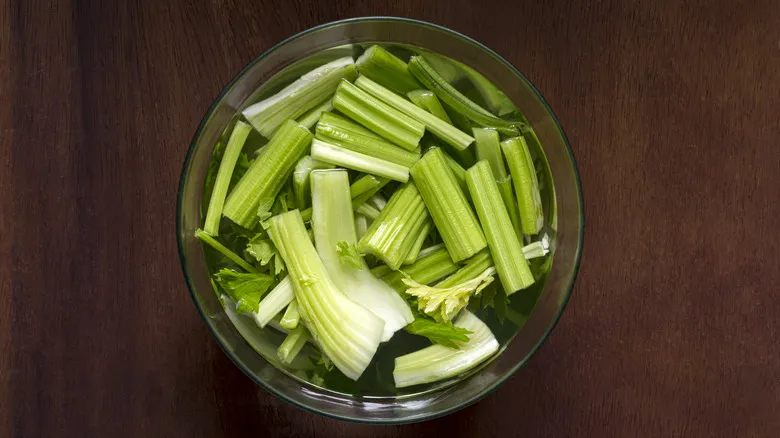Why putting celery in water works

Celery becomes limp and rubbery primarily due to rapid dehydration when not stored correctly. Since celery is made up of 95% water, the most effective way to revive it is through rehydration.
When dry celery is submerged in water, capillary action occurs. This process involves water being absorbed into the slender tube-like structures in the stalk known as xylems, which transport it upward throughout the plant. As water spreads into the plant's cells via osmosis, the cells swell and become firmer. This phenomenon creates turgor pressure, which is essential for maintaining the plant's structural integrity. You can think of it like a wilted houseplant: when it goes without water for a while, it softens and droops, but after a good watering, it perks up again. This revival is due to turgor pressure, which helps the plant regain its rigidity as it absorbs water.
It's important to note that you should never attempt to rehydrate celery in heavily salted water, as this will have the opposite effect due to osmosis. In osmosis, water moves from areas of high concentration to areas of low concentration. For instance, fresh water enters dehydrated celery because its cells have a lower water concentration. Conversely, in salt water, the water from the celery will diffuse into the surrounding fresh water due to the differing salt concentrations. While you can salt-cure celery, this method requires a specific ratio of salt to water to avoid making the celery limp.
Recommended

What Are The Best Fresh Herbs For Beef Stew?

Avoid Dry Leftover Turkey By Turning It Into A Classic Dish

Ina Garten's Butter Tip For Keeping Stuffed Turkey Breast Moist Is So Simple

What To Use Instead Of Shredded Chicken In Vegan Recipes
Next up





